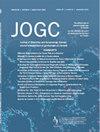两种预防性抗生素治疗早产胎膜破裂的比较。
IF 2.2
Q2 OBSTETRICS & GYNECOLOGY
引用次数: 0
摘要
目的:早产产前膜破裂(PPROM)的抗生素预防与临床绒毛膜羊膜炎的发生率降低有关。在最近的随机对照试验中,头孢呋辛联合大环内酯在延长潜伏期和减少革兰氏阴性新生儿感染方面比传统的以氨苄西林为基础的方案更有效。据此,我院修改了PPROM预防性抗生素方案,由氨苄西林+罗红霉素改为头孢呋辛+阿奇霉素。我们比较了与这两种方案相关的感染发病率,以评估其在常规实践中的临床有效性。方法:本回顾性研究纳入170例0周PPROM妇女,预期管理和抗生素预防方案:83例在2022年2月至2023年3月期间接受氨苄西林+罗红霉素治疗,87例在2023年4月至2024年5月期间接受头孢呋辛+阿奇霉素治疗。我们创建了一个多变量回归分析来预测临床绒毛膜羊膜炎的发病率,控制PPROM周,GBS定植,抗生素治疗方案和潜伏期。结果:PPROM胎龄、胎次、B组链球菌状态和潜伏期组间具有可比性。氨苄西林+罗红霉素组比头孢呋辛+阿奇霉素组产时发热和临床绒毛膜羊膜炎发生率更高(分别为9.6%比1.1%,P = 0.013和8.4%比1.1%,P = 0.046)。较早方案与较晚方案相比,剖宫产、产妇产后感染和抗生素治疗的发生率更高(33.7%比19.5%,P = 0.036;4.8% vs. 0%, P = 0.038;9.6%对2.3%,P = 0.042)。羊膜培养阳性和耐氨苄西林肠杆菌科细菌在氨苄西林+罗红霉素组中更为普遍(67.8%比50.0%,P < 0.001和23%比10% P = 0.027)。结论:头孢呋辛+阿奇霉素预防PPROM 0周孕妇围产期感染结局低于氨苄西林+罗红霉素;这得到了细菌学研究结果的支持。本文章由计算机程序翻译,如有差异,请以英文原文为准。
Two Prophylactic Antibiotic Protocols Compared for the Treatment of Preterm Pre-labour Rupture of Membranes
Objectives
Antibiotic prophylaxis in preterm pre-labour rupture of membranes (PPROM) is associated with a reduced rate of clinical chorioamnionitis. In recent randomized controlled trials, cefuroxime combined with a macrolide was more effective than traditional ampicillin-based regimens in prolonging latency and reducing gram-negative neonatal infections. Accordingly, our institution revised its PPROM prophylactic antibiotic protocol from ampicillin and roxithromycin to cefuroxime and azithromycin. We compared the infectious morbidity associated with these 2 regimens to assess their clinical effectiveness in routine practice.
Methods
This retrospective study included 170 women with PPROM at <370 weeks gestation, managed expectantly and treated with antibiotic prophylactic protocols: 83 received ampicillin and roxithromycin from February 2022 to March 2023, and 87 received cefuroxime and azithromycin from April 2023 to May 2024. We conducted a multivariate regression analysis to predict clinical chorioamnionitis rates, controlled for PPROM week, group B Streptococcus colonization, antibiotic regimen, and latency.
Results
Gestational age at PPROM, parity, group B Streptococcus status, and the latency period were comparable between the groups. In the ampicillin and roxithromycin group, compared with the cefuroxime and azithromycin group, intrapartum fever and clinical chorioamnionitis rates were higher (9.6% vs. 1.1%, P = 0.013 and 8.4% vs. 1.1%, P = 0.046, respectively). Compared with the later regimen, the earlier regimen was associated with higher rates of cesarean delivery, maternal postpartum infections, and antibiotic treatment (33.7% vs. 19.5%, P = 0.036; 4.8% vs. 0%, P = 0.038; and 9.6% vs. 2.3%, P = 0.042; respectively). Positive chorioamniotic membrane cultures and ampicillin-resistant Enterobacteriaceae species were more prevalent in the ampicillin and roxithromycin group (67.8% vs. 50.0%, P < 0.001, and 23% vs. 10%, P = 0.027, respectively).
Conclusions
Cefuroxime plus azithromycin as prophylaxis for PPROM at <370 weeks showed fewer maternal peripartum infectious outcomes than ampicillin plus roxithromycin; this was supported by bacteriologic findings.
求助全文
通过发布文献求助,成功后即可免费获取论文全文。
去求助
来源期刊

Journal of obstetrics and gynaecology Canada
OBSTETRICS & GYNECOLOGY-
CiteScore
3.30
自引率
5.60%
发文量
302
审稿时长
32 days
期刊介绍:
Journal of Obstetrics and Gynaecology Canada (JOGC) is Canada"s peer-reviewed journal of obstetrics, gynaecology, and women"s health. Each monthly issue contains original research articles, reviews, case reports, commentaries, and editorials on all aspects of reproductive health. JOGC is the original publication source of evidence-based clinical guidelines, committee opinions, and policy statements that derive from standing or ad hoc committees of the Society of Obstetricians and Gynaecologists of Canada. JOGC is included in the National Library of Medicine"s MEDLINE database, and abstracts from JOGC are accessible on PubMed.
 求助内容:
求助内容: 应助结果提醒方式:
应助结果提醒方式:


